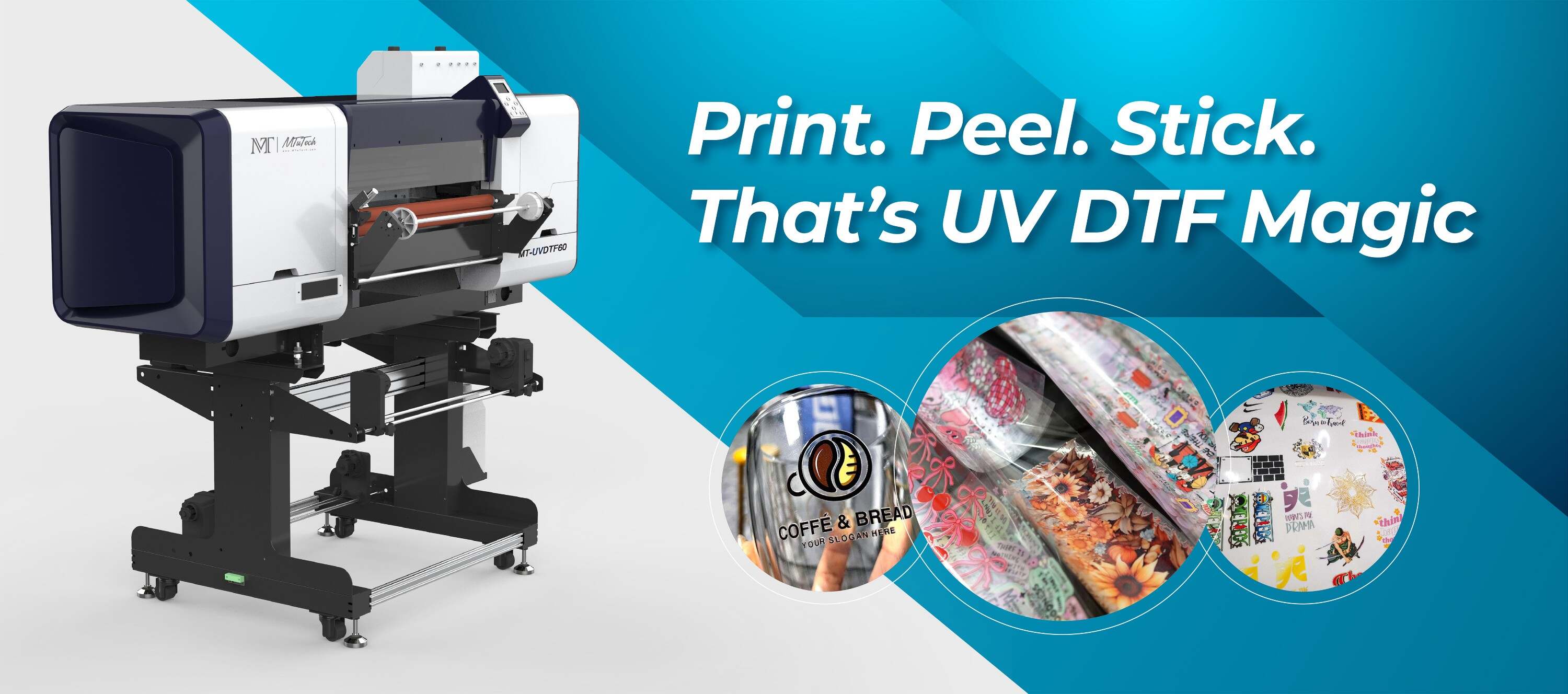Understanding Adhesion in UV DTF Printing
Introduction
Adhesion is the heart of UV DTF printing. It determines how well your transfer sticks to surfaces like glass, plastic, metal, or wood. Without proper adhesion, even the most vibrant print will fail to deliver lasting results. In this guide, we’ll break down what adhesion means in UV DTF printing and how to optimize it for flawless transfers every time.
What is Adhesion in UV DTF?
Adhesion refers to how strongly the printed and laminated UV DTF transfer bonds to a surface after application. It’s the difference between a transfer that peels off in days and one that lasts for months or years. Proper adhesion ensures your designs stay sharp, durable, and professional-looking.
Key Factors That Affect Adhesion
- **Surface Cleanliness:** Dirt, oils, and dust weaken the bond
- **Film and Ink Compatibility:** Use UV DTF-specific A/B films and high-quality UV-curable inks
- **Application Pressure:** Even, firm pressure helps eliminate bubbles and maximize contact
- **Post-Application Time:** Let the adhesive settle and cure for stronger bonding
Surface-Specific Adhesion Tips
- **Glass & Ceramics:** Clean with alcohol, avoid humidity
- **Metal:** Light sanding or surface prep improves grip
- **Wood:** Sealed wood works better than raw or grainy wood
- **Plastic:** Test adhesion on different plastics (ABS, PP, PET, etc.) before production
Improving Adhesion with Proper Technique
- Use a roller or squeegee during transfer to eliminate air gaps
- Apply heat (mild, not excessive) post-transfer for deeper bond on tough surfaces
- Let prints sit 12–24 hours before exposure to water or friction
Adhesion Testing and Troubleshooting
- Do peel tests to check stickiness under stress
- If adhesion is weak, check surface prep and ink curing
- Upgrade to stronger adhesive B film if necessary
Conclusion
Great adhesion means great results. By understanding the science and technique behind UV DTF bonding, you’ll get prints that don’t just look good — they last. With a little attention to surface prep and transfer method, you’ll eliminate peeling problems and keep customers coming back.
Ensure every design sticks flawlessly with our ultra-precise UV DTF printer — engineered for durability and reliable adhesion on every surface.

